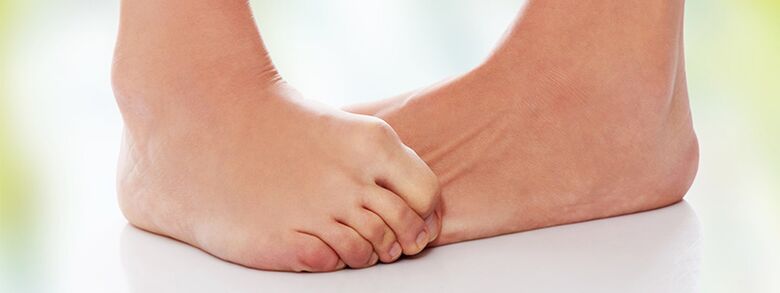
Onychomycosis is one of the most unpleasant diseases that appear suddenly and cause a lot of trouble. Some treat it for years, others - just a few months. Why is that? Indeed, there is an important rule: if the symptoms of nail fungus are detected at an early stage, your treatment time will be significantly reduced.
Unfortunately, not everyone is able to recognize it immediately after infection. Fungal spores gradually "populate" the territory of human skin, which is why you should pay attention to the slightest suspicious changes in the skin and nails, so as not to miss the first signs of this disease.
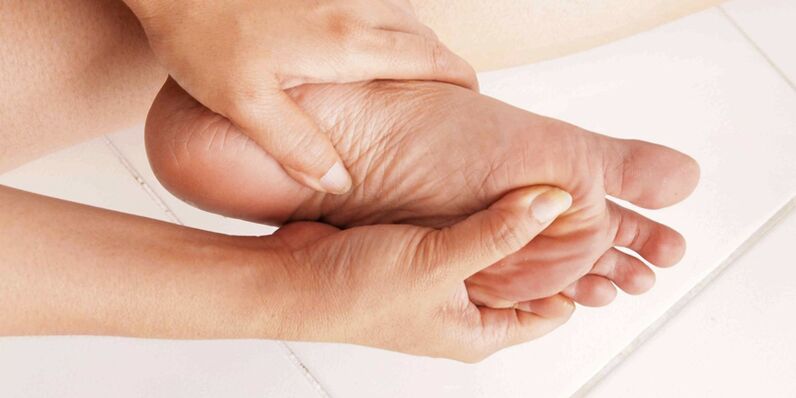
Causes and signs of fungal infection of the feet
Few people examine their feet with meticulous care on a daily basis. Often not everyone can recognize nail fungus, because different types of spores can live on the surface of the skin for a long time, without showing themselves in any way. For example, fungi of the genus Candida are normally found on the feet of every person. We are talking about conditionally pathogenic flora, which under certain unfavorable conditions provokes the development of the disease. What can serve as an impetus for the appearance of a fungus?
- Immunodeficiency states (oncological diseases, congenital pathologies, autoimmune diseases, AIDS, hepatitis and others).
- Diabetes. The so-called diabetic foot is very often affected by fungi and bacteria due to impaired blood flow, as well as the formation of ulcers and non-healing wounds.
- Hyperhidrosis or excessive sweating of the skin. Since nail fungus feels great in a humid and warm environment, it is not difficult to recognize it on the skin of a person with excessive sweating.
- Endocrine disorders.
Onychomycosis is very easy to infect, for example in a swimming pool, sauna or gym. Fungal spores can deposit on the skin where there are cracks, wounds, and damage. It is important to diagnose the disease at the first manifestations, since the result of treatment directly depends on it. Conventionally, onychomycosis can be divided into several stages, each with a number of signs.
- Initial stage: the skin on the legs itches and flakes a little, the external manifestations of the fungus, as we are used to seeing in the photo, usually do not occur. You may experience abnormally dry skin, nothing more.
- The next stage is characterized by the appearance of red spots or whitish plaque on the skin of the foot and between the toes. It all depends on the type of fungus that has affected your feet. The spots come in different sizes and are usually well defined with scaly edges. The white coating looks like powder or flour.
- In addition, bubbles of liquid begin to form on the legs, they are unevenly distributed on the surface of the skin and over time burst. At the site of the burst bubble, an ulcer is formed, which does not heal for a long time.
- It is possible to determine the fungus on the nails in one of the last stages, since changes in the nail plate often begin after the appearance of itchy skin and ulcers. The nail thickens noticeably. You can see how it is chipping off and the free edge is crumbling. The color of the nail plate also changes: yellow-green, brown or even black. It separates from the nail bed, exposing it.
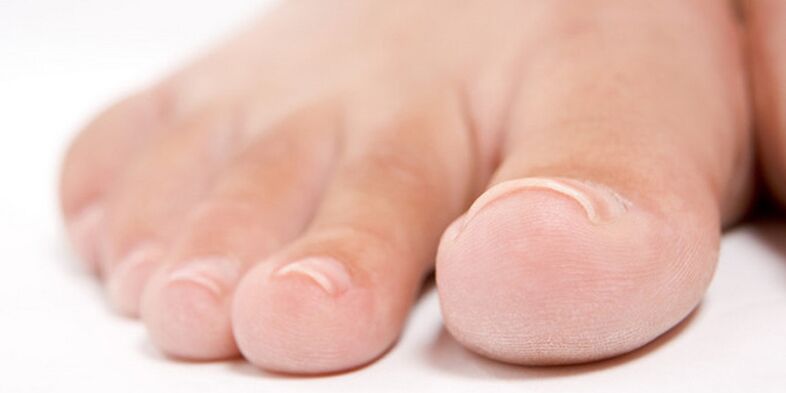
Onychomycosis detected: what to do?
If you notice the above manifestations on the feet, you should immediately consult a dermatologist, a mycologist - a specialist in the study of fungi or a podiatrist (a doctor who specializes in problems with the feet and nails). Without fail, an analysis of the nail fungus will be prescribed to you in order to know its type and degree of infection. Most often, onychomycosis appears when the foot is affected by fungi:
- Trichophytos,
- Dermatophytes,
- Spores of the genus Candida.
If the initial stage of nail fungus is characterized by only a few minor signs and is localized only on one of the feet, as you can see in the photo, then you are in luck.
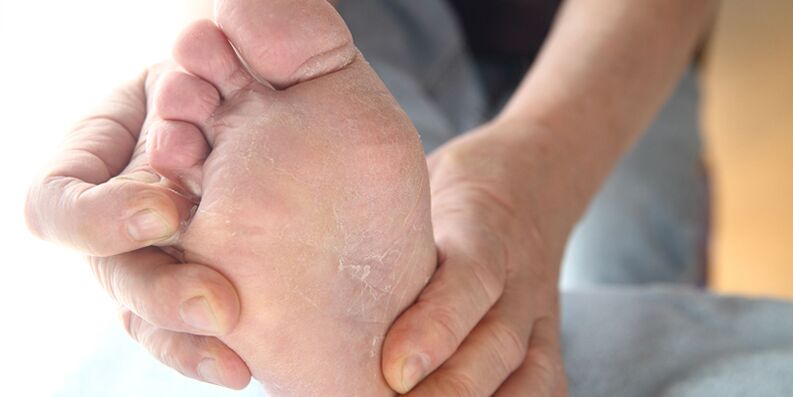
Most likely, the doctor will prescribe a standard treatment regimen with antimycotic drugs that effectively kill the fungus.
For therapy, it is recommended to use special ointments, creams, sprays and nail polishes.
Unfortunately, sometimes a person notices the appearance of toenail fungus, when the initial stage has long passed.
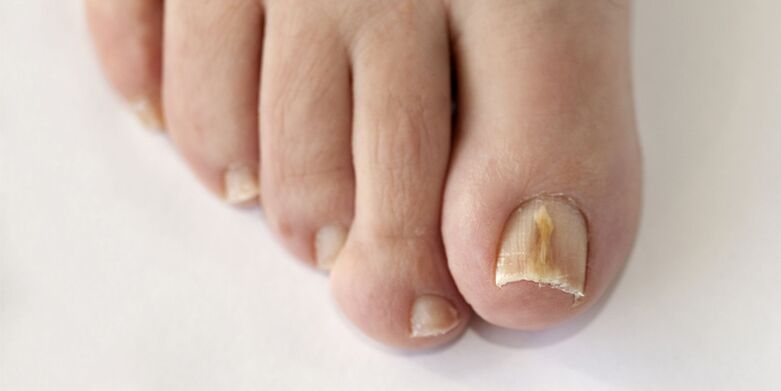
In the photo, you can easily determine that the disease is in progress: the marigold is deformed, it peels off from the nail bed and has changed color, deep painful cracks have formed between the fingers, both feetare affected by the fungus. In such a situation, antibiotic therapy will help, as well as treatment with immunostimulatory and antiallergic drugs and taking vitamins. You can supplement the complex therapy with recipes of traditional medicine: baths with herbal decoctions, sea salt and soda, treatment with a solution of vinegar, applications with garlic, pork fat and othersingredients.
In the most extreme case, the marigold affected by onychomycosis is surgically removed or cut in the office of a master pedicure (podiatrist) using a special burr.
Now you know how the fungus manifests itself on the feet, the causes of its appearance and how to deal with it. We hope you found this information useful.

























